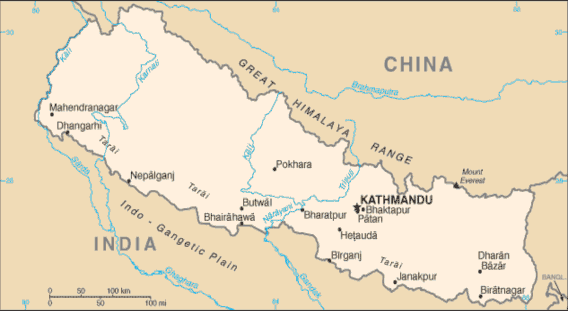Map 2.6: Nepal

Image Source: https://www.cia.gov/library/publications/the-world-factbook/geos/np.html
3.1. Background

♤ As close neighbours, India and Nepal share a unique relationship of friendship and cooperation characterized by open borders and deep-rooted people-to-people contacts of kinship and culture.
♤ Nepal has an area of 147,181 sq. kms. and a population of 29 million. It shares a border of over 1850 kms in the east, south and west with five Indian States – Sikkim, West Bengal, Bihar, Uttar Pradesh and Uttarakhand – and in the north with the Tibet Autonomous Region of the People's Republic of China
♤ The India-Nepal Treaty of Peace and Friendship of 1950 forms the bedrock of the special relations that exist between India and Nepal.
♤ Under the provisions of this Treaty, the Nepalese citizens have enjoyed unparalleled national treatment in India, availing facilities and opportunities at par with Indian citizens. Nearly 6 million Nepali citizens live and work in India. Around 6,00,000 Indians are living/domiciled in Nepal.
